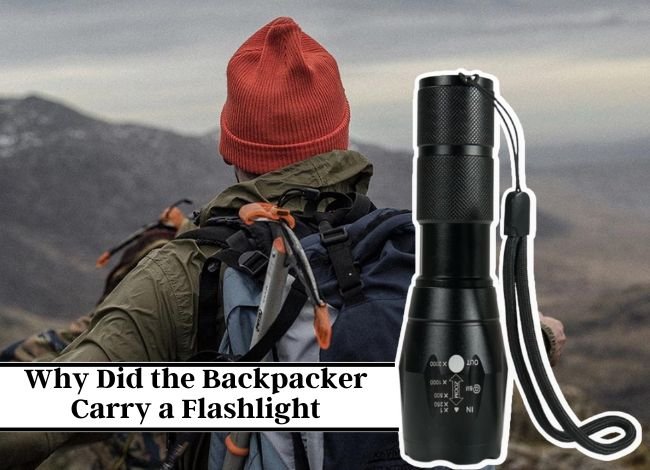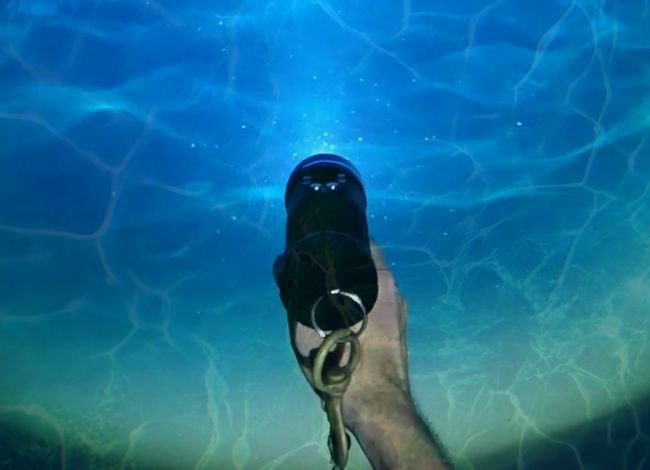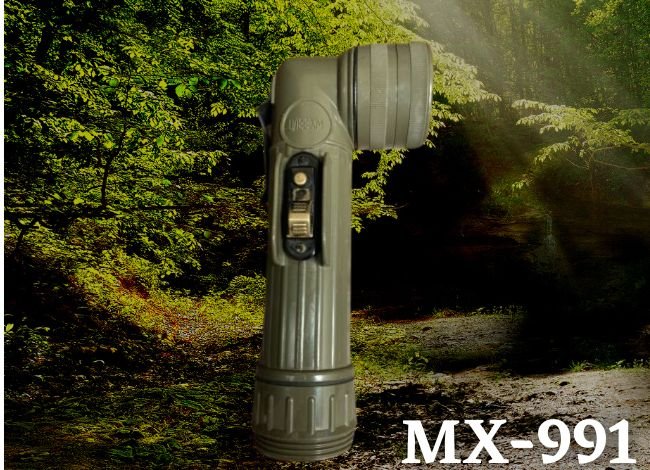Last Updated on May 6, 2025

Whether you’re an experienced trekker or just beginning your journey into the great outdoors, one item should always make its way into your backpack — a flashlight. But why is it so essential? In this guide, we’ll explore all the reasons why every backpacker carries a flashlight, what kind you should choose, and the many unexpected ways this simple tool can save your adventure — or even your life.
What Is a Flashlight and Why Is It Essential for Backpackers?
A flashlight is a portable hand-held electric light that uses batteries to illuminate dark areas. For backpackers, it’s not just a convenience — it’s a necessity. Whether you’re hiking through forests, setting up camp after sunset, or navigating back trails, a flashlight is your best defense against the unknown.
Unlike floor or camping lanterns, flashlights are compact, powerful, and easy to carry — perfect for minimalist packing. Most modern flashlights are LED-based, offering brighter light and longer battery life.
Top Reasons Why Backpackers Carry a Flashlight
1. To Locate Items in a Backpack at Night
Ever tried to find your toothbrush or first-aid kit in a pitch-black tent? A flashlight lets you quickly find gear inside your backpack without unpacking everything or relying on ambient light. Whether it’s midnight or early morning, the ability to see clearly inside your bag is crucial for comfort and safety.
2. To Walk or Hike Safely in the Dark
Backpacking often involves navigating poorly lit paths, rocky trails, or dense forests. Flashlights help illuminate the road ahead, prevent falls, and reveal wildlife or dangerous terrain. Without one, you’re left vulnerable to tripping, getting lost, or encountering unexpected obstacles.
Pro tip: Choose a flashlight with a focused beam for distance visibility and a flood beam for close tasks.
3. For Camp Tasks and Setup
Setting up a tent, cooking, gathering firewood, or even brushing your teeth in the dark can be frustrating without light. A flashlight or headlamp allows you to work hands-free, especially useful during late-night or early morning activities.
4. Emergencies and Rescue Situations
A flashlight can be a literal lifesaver during emergencies. Use it to:
- Signal for help (especially if it has an SOS or strobe mode)
- Look for injured companions
- Light the way for rescuers
- Avoid wildlife encounters
It’s one of the first tools emergency responders and hikers rely on in disaster or survival scenarios.
5. Navigating Fog, Rain, and Bad Weather
Fog, heavy rain, or snow can severely impact visibility. In these cases, a flashlight helps cut through the mist and prevents disorientation.
Much like how vehicles rely on fog lights, hikers benefit from the focused beam of a flashlight when natural light is limited or scattered.
6. Red Light Mode to Deter Insects
Did you know many bugs are attracted to bright white or blue lights? Red light is less visible to insects, making it ideal for peaceful nights.
If your flashlight supports multiple color modes, use the red light while reading, cooking, or relaxing to minimize bug attraction — especially in forested or humid areas.

7. Part of a Complete Emergency Kit
An effective survival or emergency kit should always include a flashlight. It pairs well with:
- Rope
- Firestarter
- Water purifier
- Knife
- Tape
- Batteries
It becomes your primary visibility tool during blackouts, forest fires, or natural disasters, ensuring you can always find what you need.
8. To Start a Fire in the Wild
A little-known trick: you can start a fire using a flashlight lens.
Here’s how:
- Remove the flashlight lens
- Hold it to focus sunlight on dry tinder
- Wait for the heat to ignite the tinder
This method is useful when you’ve run out of matches or lighters. It’s not easy, but in an emergency, it works — especially with concave lenses.
9. Underwater Exploration or River Crossings
Backpacking often includes rivers, lakes, or coastal zones. For such scenarios, invest in a waterproof or diving flashlight. These are designed for:

- Visibility under water where sunlight can’t reach
- Nighttime swims
- Emergency crossings
Top underwater flashlight picks:
- Scubapro Nova 850 – Best for deep dives and long burn time
- Light and Motion GoBe 500 Spot – Versatile for land and water
- Mares EOS 20RZ – Offers 2300 lumens; perfect beam quality
- Kraken NR 2000 – Compact and bright with rechargeable power
10. Tactical or Defense Use
In unfamiliar or remote territories, a flashlight can offer self-defense capabilities. Tactical models often include:
- Strobe or blinding modes
- Serrated bezels for striking
- High-lumen output to disorient attackers
Backpackers traveling solo or through risky areas may prefer a multi-use tactical flashlight to increase personal safety.
Military Flashlights: Civilian Use and Design
What Makes Military Flashlights Special?
Military flashlights are designed for rugged environments and mission-critical use. One of the most popular models is the MX-991/U, manufactured by Fulton Industries and used by U.S. troops.
Are Military Flashlights Legal for Civilian Use?
Yes. While they are optimized for military tasks, there is no legal restriction preventing civilians from using them. In fact, many campers, preppers, and hikers use military-grade flashlights for their durability and reliability.
Why Are Military Flashlights Angled or Bent?
Angled flashlights are:
- Easier to clip onto vests, belts, or backpack straps
- Allow for hands-free lighting
- Great for reading maps or navigating at night
 The angled design helps soldiers and hikers alike multitask efficiently. It reduces the need to manually hold or adjust the flashlight constantly — especially in motion.
The angled design helps soldiers and hikers alike multitask efficiently. It reduces the need to manually hold or adjust the flashlight constantly — especially in motion.
What Features Should You Look for in a Backpacking Flashlight?
Here’s a quick feature checklist:
| Feature | Importance |
|---|---|
| Brightness (Lumens) | At least 300 lumens for general use; 1000+ for tactical tasks |
| Beam Type | Adjustable focus (spot + flood) is ideal |
| Battery Type | Rechargeable lithium-ion preferred; always carry spares |
| Modes | Multiple modes: high, low, strobe, red |
| Waterproof Rating | IPX7 or higher for rain and submersion |
| Durability | Shockproof aluminum or military-grade plastic |
| Size & Weight | Compact and lightweight for easy packing |
Best Backpacking Flashlights for 2025
Need recommendations? Here are some top-rated models:
- Fenix PD36R – 1600 lumens, USB-C charging, reliable for all terrains
- Streamlight ProTac 1L-1AA – Compact and dual-fuel capable
- Nitecore MH12 V2 – Tactical with 1200 lumens and a long throw beam
- Black Diamond Spot 400-R – Headlamp option with red light mode
- Anker Bolder LC90 – Budget-friendly, zoomable, excellent battery life
Backpacking Flashlight Tips
- Carry spare batteries or a power bank
- Label your flashlight for easy identification
- Store it in an easy-access pouch on your backpack
- Don’t rely on your phone flashlight – it drains battery fast and lacks power
Conclusion: Never Leave Without a Flashlight
So, why did the backpacker carry a flashlight?
Because it’s one of the most essential tools for safety, survival, and convenience. Whether navigating tough terrain, warding off bugs, handling emergencies, or simply finding gear at night, a flashlight is your best friend.
As a backpacker, don’t overlook this small but powerful tool. Choose a high-quality flashlight, and you’ll travel safer, smarter, and more prepared — no matter where the trail leads.